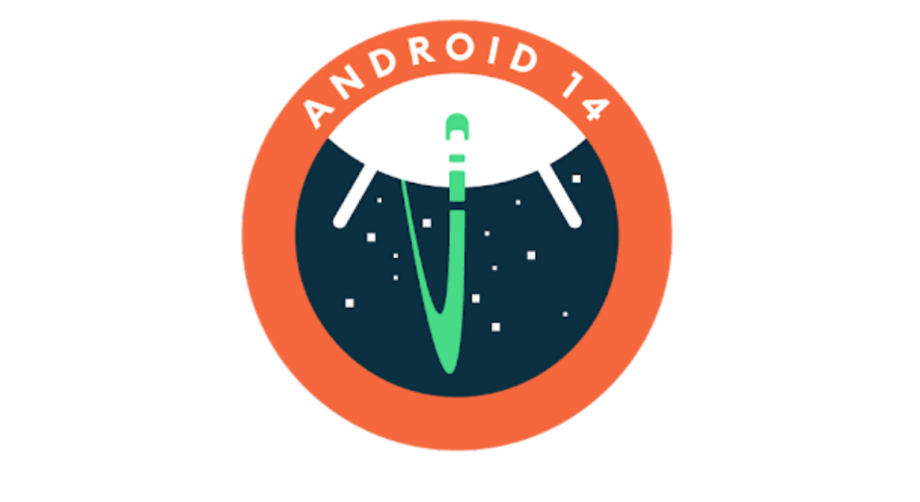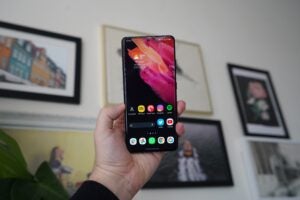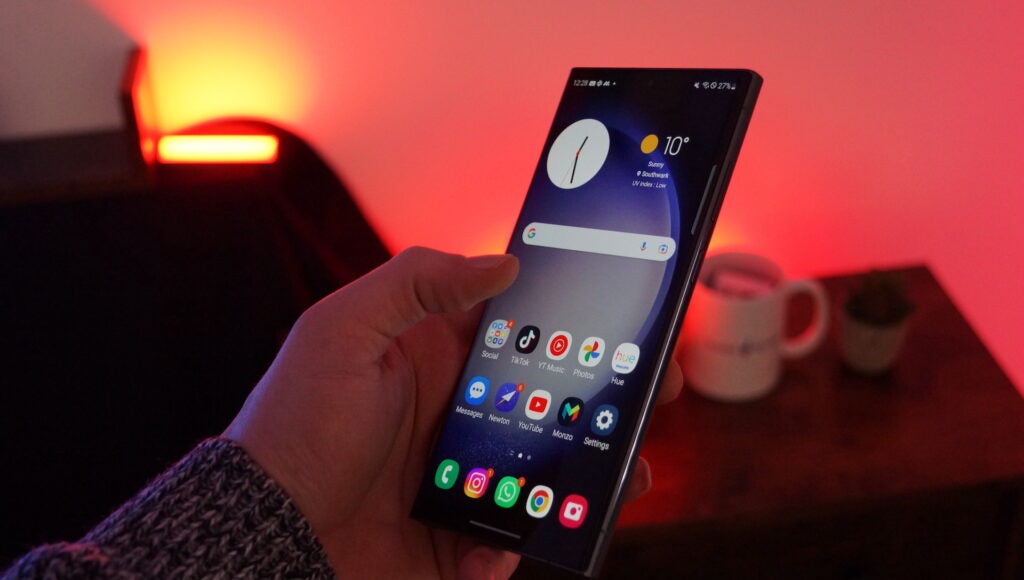Android 14: All there is to know about this year’s big update

Google has officially unveiled Android 14 at Google I/O 2023, giving us our first in-depth look at the upcoming Android update due out later this year.
The news comes following the release of the Android 14 developer preview earlier this year, with key new features including a customisable lock screen with AI chops, improved support for Android tablets and more.
To discover everything we know about Android 14 so far, along with our predictions for the operating system and which devices it’ll be supported on, keep scrolling.

Galaxy S21 Ultra with 100GB Data
This once flagship phone can now be had for a super low price, making it an excellent upgrade for any Android user in 2023.
- BuyMobiles
- No upfront cost
- Only £36/month
When will Android 14 be released?
Like Apple with iOS, Google releases a major Android update every year and Android 14 isn’t expected to be any different. It has been announced at Google I/O 2023 on 10 May, but that doesn’t mean it’ll be available to download right away.
First comes the beta testing process, giving developers and manufacturers time to make sure their apps and hardware are compatible with the latest update. This usually takes a few months.
If you’re curious about the Android 14 beta and want to give it a whirl for yourself, you can visit our guide to learn how to install the Android 14 beta right now.
When it comes to the full release, Pixel owners can also expect to be first in line, with release usually around August or September, with other phones following suit soon after.
Which devices will support Android 14?
That’s the million-dollar question right there. As noted, the upgrade process is far from straightforward when it comes to Android smartphones – even for those who should get the Android 14 upgrade as part of a multi-year OS upgrade promise.
It’s nigh-on impossible to list all devices that’ll support the upgrade, especially as it hasn’t been fully announced by Google just yet, so we’d recommend checking your manufacturer’s upgrade promise for your smartphone. Samsung, Google and Oppo are leading the pack with multi-year OS upgrades, but it’s not commonplace among all manufacturers just yet.

Confirmed Android 14 features
After teasing the update for the first few months, Google has given us our first proper look at Android 14 at Google I/O, with key focuses on improved support for tablets and foldables, a new customisable lock screen system and improved Find My Device functionality complete with Unknown Tracker Alerts.
Improved support for tablets and foldables
As confirmed by Google with the release of the first Android 14 developer preview way before Google I/O, this year’s software update should vastly improve support for big-screen foldables and tablets, with the former desperately needing some TLC to get apps to support the sometimes odd form factors.
As it stands, most apps on Google Play simply aren’t optimised for the boxy aspect ratio of inner foldable displays, and that includes some hugely popular apps like Instagram.
Google says that it’s continuing work that started with Android 12L and Android 13 to vastly improve the big-screen experience on Android, with a new set of tools for developers that should make it easier to optimise their apps for different layouts.
“With every release, our goal is to make it easier for you to optimize your app across all Android surfaces,” Android engineering chief Dave Burke says in an Android Developers Blog about Android 14. Let’s hope that’s true.
At Google I/O the company claimed that all 50 Google apps have been updated to play nice with the bigger form factor of tablets and foldables, and is working with popular app developers from the likes of Spotify and Disney+ to bring support to big-screen devices.
Customisable lock screen functionality
Much like Apple’s iPhone with the iOS 16 update, the key new feature for consumers in Android 14 is a fully customisable lock screen experience.
It works in a similar way to the iPhone, allowing you to change the layout of the lock screen as well as the information that’s displayed. You can change the style of the time and date, incoming notifications and shortcuts to apps and hardware.
Wallpapers are a particular focus with the new lock screen tech, with Android 14 able to create cinematic wallpapers with 3D and motion effects based on your images, helping to give your lock screen a more dynamic look.
If emoji are more your thing, you’ll likely be a fan of the customisable emoji wallpaper that lets you select your favourite emoji and display them in one of several stylish layouts. If it sounds familiar, it’s because the iPhone does the same thing, but hey…
Because Google is all about AI, the lock screen experience wouldn’t be complete without some kind of AI functionality. That comes in the form of custom wallpapers completely generated by AI, allowing you to use text prompts and a series of pop-ups to generate unique imagery for use on the lock screen.
Updated Find My Device functionality
Android 14 is also set to bring improvements to Google’s Find My Device app, not only providing a more user-friendly interface to find your smartphone and tablet, but a way to track supported accessories like the Google Pixel Buds.
Google has also worked with Apple and other brands to implement Unknown Tracker Alerts that look to alert you if an unknown tracker has been in your vicinity for quite some time. The company claims that it’s working with Apple on an industry standard for trackers that should work across all phones, regardless of whether they run iOS or Android.
Improved battery efficiency
Recent iterations of MediaTek and Qualcomm chipsets have made huge gains in battery efficiency, but that hasn’t stopped Google from wanting to further optimise the Android operating system to be as efficient as it can possibly be.
Google is trying to do this by streamlining the background work of apps, allowing, for example, developers to ensure background tasks are performed only when users are connected to Wi-Fi and not the more power-hungry cellular connectivity.


